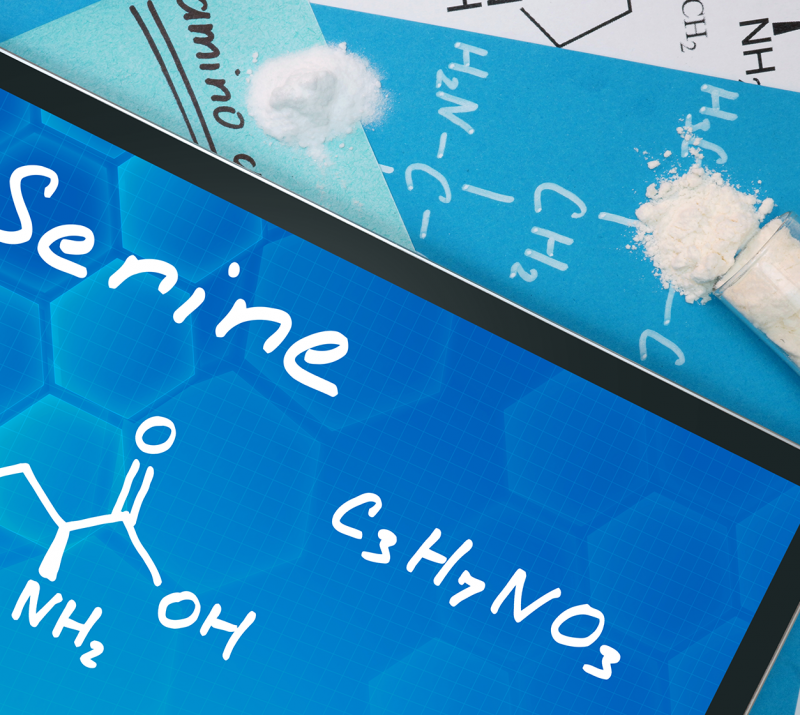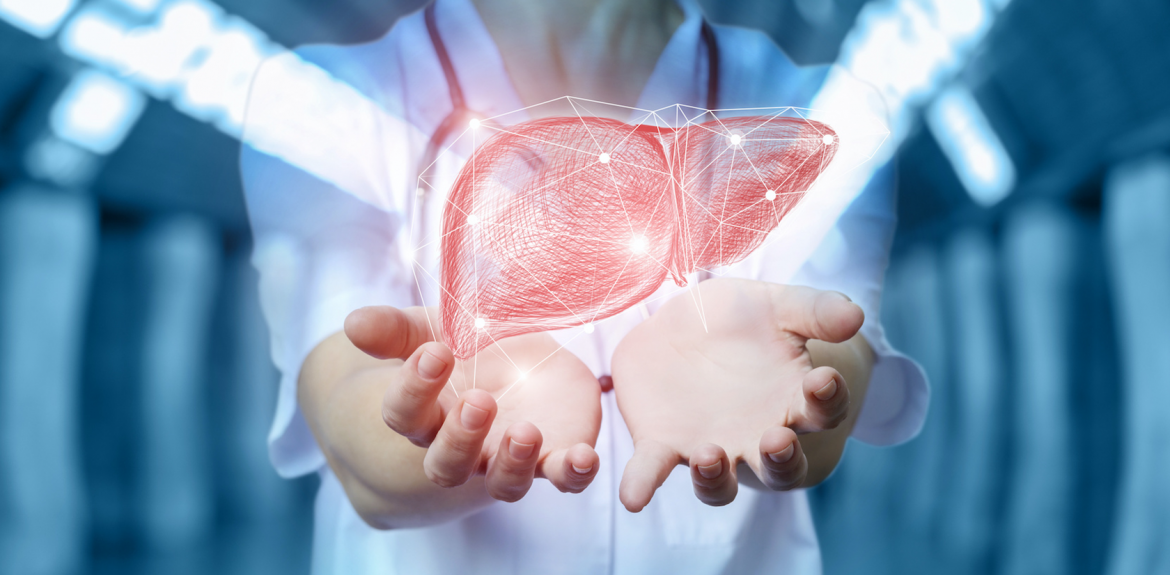
PROJECT OVERVIEW
Metabolic Cofactor Supplementation in Obese Patients With Non-Alcoholic Fatty Liver Disease (NAFLD)
https://clinicaltrials.gov/ct2/show/record/NCT04330326
In this study, we aim to lower liver fat content in obese patients with NAFLD by increasing the hepatic levels of pivotal metabolic cofactors via simultaneous dietary supplementation of serine, L-carnitine, N-acetylcysteine and nicotinamide riboside.
The primary objective of the study is the difference of liver fat amount between subjects receiving either ten-week treatment with co-factor supplementation or placebo, as quantified by MRS.
The secondary objectives are: (1) to determine the change in liver fat amount as measured by MRS and MRI within the same groups; (2) to assess the tolerability and safety profile of co-factor supplementation; (3) and examine the additional efficacy parameters including biomarker, lipidomic, metabolomic and microbiota analysis.
PROJECT DETAILS
- Category NAFLD

| Tracking Information | |||||||||
|---|---|---|---|---|---|---|---|---|---|
| First Submitted Date ICMJE | March 27, 2020 | ||||||||
| First Posted Date ICMJE | April 1, 2020 | ||||||||
| Last Update Posted Date | April 1, 2020 | ||||||||
| Actual Study Start Date ICMJE | July 20, 2019 | ||||||||
| Estimated Primary Completion Date | September 2020 (Final data collection date for primary outcome measure) | ||||||||
| Current Primary Outcome Measures ICMJE |
Magnetic Resonance Spectroscopy (MRS) Measurement [ Time Frame: 2 weeks, 6 weeks and 10 weeks ]
The change in liver fat content as well as subcutaneous abdominal and intra-abdominal fat content between the placebo and cofactor treatment arms in NAFLD patients from baseline to 2 weeks, 6 weeks and 10 weeks.
|
||||||||
| Original Primary Outcome Measures ICMJE | Same as current | ||||||||
| Change History | No Changes Posted | ||||||||
| Current Secondary Outcome Measures ICMJE |
|
||||||||
| Original Secondary Outcome Measures ICMJE | Same as current | ||||||||
| Current Other Pre-specified Outcome Measures | Not Provided | ||||||||
| Original Other Pre-specified Outcome Measures | Not Provided | ||||||||
| Descriptive Information | |||||||||
| Brief Title ICMJE | Metabolic Cofactor Supplementation in Obese Patients With Non-Alcoholic Fatty Liver Disease | ||||||||
| Official Title ICMJE | A Phase 2, Randomised, Placebo Controlled Study to Evaluate the Efficacy, Tolerability and Safety of Metabolic Cofactor Supplementation in Obese Subjects With Non-Alcoholic Fatty Liver Disease (NAFLD) | ||||||||
| Brief Summary | This short-term, randomized, placebo-controlled, investigator-initiated trial aims to establish metabolic improvements in NAFLD subjects by dietary supplementation with cofactors N-acetylcysteine, L-carnitine tartrate, nicotinamide riboside and serine. Concomitant use of pivotal metabolic cofactors via simultaneous dietary supplementation will stimulate three different pathways to enhance hepatic β-oxidation and this study’s hypothesis is that this will result in decreased amount of fat in the liver. | ||||||||
| Detailed Description | In this study, investigators aim to lower liver fat content in obese patients with NAFLD by increasing the hepatic levels of pivotal metabolic cofactors via simultaneous dietary supplementation of serine, L-carnitine, N-acetylcysteine (NAC) and nicotinamide riboside (NR).
The study is based on a three-step strategy to increase the amount of fat oxidization in liver: (1) First, the investigators will include L-carnitine to enhance the transport of fatty acids across the mitochondrial membrane (by forming a long chain acetylcarnitine ester and being transported by carnitine palmitoyltransferase (CPT) I and CPT II). Carnitine also plays a role in stabilizing coenzyme A (CoA) and acetyl-CoA levels through the ability to receive or give an acetyl group. (2) Second, the investigators will include nicotinamide riboside, precursor of nicotinamide adenine dinucleotide (NAD+) to boost the level of hepatic β-oxidation of fatty acids in mitochondria. Decreased electron transport chain function combined with impaired rates of fatty acid β-oxidation leads to the accumulation of incomplete products of β-oxidation, which combined with increased levels of reactive oxygen species (ROS) contribute to insulin resistance. Furthermore, as L-carnitine, nicotinamide riboside stimulate the transfer of fatty acids from cytosol to mitochondria.(3) Finally, they will include the two glutathione precursors serine and N-acetylcysteine to increase glutathione levels in the hepatocytes. Increased glutathione levels will also protect against free radical-mediated oxidative stress generated by the increased β-oxidation of fatty acids in mitochondria. Previous studies showed that each agent is able to decrease liver fat amount separately and a proof-of-concept study using serine supplementation, and a phase I study using this three-step approach resulted in a significant decrease in plasma metabolites associated with liver fat without significant side effect. Concomitant use of pivotal metabolic cofactors via simultaneous dietary supplementation will stimulate three different pathways to enhance hepatic β-oxidation. The novel design with this study is to give the L-carnitine, NR, serine and NAC as a cocktail. Based on investigators’ hypothesis is that this will result in decreased amount of fat in the liver. The study population will consist of 45 male and female adult overweight and obese subjects diagnosed with NAFLD. Eligible subjects must have signed an informed consent, meet all inclusion criteria and have none of the exclusion criteria. Patients will be randomized on a 2:1 basis to the cofactor mixture or placebo. The subjects will take a mixture of cofactors or matching placebo as powder dissolved in water by mouth. Subjects in active treatment will receive dietary supplementation with N-acetylcysteine, L-carnitine tartrate, nicotinamide riboside, and serine, administered as a mixture. Half dosage of the co-factors will be given for two weeks (one dose taken just after dinner), and full dosage for 8 weeks (two equal doses taken just after breakfast and dinner). Patients who can tolerate the study agents will start to take half dose of co-factors supplementation (i.e., 1 dosage daily just after dinner) for two weeks. The active treatment duration will be 10 weeks for each subject and the total study duration is estimated as 14 months. The study comprises seven clinical visits; (1) pre-screening visit, (2) screening visit, (2) randomization visit, (3) post-treatment visit (day 14); (4) post-treatment visit (day 28); (5) post-treatment visit (day 42) and (4) end of treatment visit (day 70). At visit 1 informed consent will be signed, all procedures including clinical and physical examination, assessment of inclusion and exclusion criteria, genetic analysis and transient elastography will be done. At visit 2 and visit 7, all procedures including review of 3-day diet records, clinical and physical examination; body composition analysis with Bioelectrical Impedance Analysis (BIA), ECG evaluation, blood, urine and stool sampling for routine laboratory tests, lipidomics, metabolomics and gut microbiota analysis and magnetic resonance imaging and MR spectroscopy will be carried out. At visit 3, eligible study subjects will be randomized to active therapy or placebo groups and study agents will be dispensed as half-of therapy. At visit 4, and 6, clinical and physical examination, ECG evaluation, blood, urine and stool sampling for routine laboratory tests, lipidomics, metabolomics and gut microbiota analysis, magnetic resonance imaging and MR spectroscopy and initiation of full dose therapy (i.e. taking cocktails two times just after breakfast and dinner) will be realized. At visit 5, visit 4 and 6 will be repeated excluding magnetic resonance imaging and MR spectroscopy. After the visit 7, participants will stop taking study agents. A subject will be considered as having completed the study if he/she has completed all assessments at the End of Treatment Visit (Visit 7) and has been followed up until 10 weeks after initiation of the study drugs. Statistics for the primary outcome parameter will be tested by Mann-Whitney U test or t-test depending on the results of normality test. For the secondary and third outcome parameters one-way repeated measures ANOVA will be performed. |
||||||||
| Study Type ICMJE | Interventional | ||||||||
| Study Phase ICMJE | Phase 2 | ||||||||
| Study Design ICMJE | Allocation: Randomized Intervention Model: Parallel Assignment Intervention Model Description: A total of 45 overweight or obese patients with NAFLD will be randomized on a 2:1 basis to the cofactor mixture or placebo.
Masking: Single (Participant) |
||||||||
| Condition ICMJE | Non-alcoholic Fatty Liver Disease (NAFLD) | ||||||||
| Intervention ICMJE |
|
||||||||
| Study Arms ICMJE |
|
||||||||
| Publications * | Not Provided | ||||||||
| * Includes publications given by the data provider as well as publications identified by ClinicalTrials.gov Identifier (NCT Number) in Medline. | |||||||||
| Recruitment Information | |||||||||
| Recruitment Status ICMJE | Recruiting | ||||||||
| Estimated Enrollment ICMJE |
45 | ||||||||
| Original Estimated Enrollment ICMJE | Same as current | ||||||||
| Estimated Study Completion Date ICMJE | September 2020 | ||||||||
| Estimated Primary Completion Date | September 2020 (Final data collection date for primary outcome measure) | ||||||||
| Eligibility Criteria ICMJE | Inclusion Criteria:
Exclusion Criteria:
|
||||||||
| Sex/Gender ICMJE |
|
||||||||
| Ages ICMJE | 18 Years to 70 Years (Adult, Older Adult) | ||||||||
| Accepts Healthy Volunteers ICMJE | No | ||||||||
| Contacts ICMJE |
|
||||||||
| Listed Location Countries ICMJE | Turkey | ||||||||
| Removed Location Countries | |||||||||
| Administrative Information | |||||||||
| NCT Number ICMJE | NCT04330326 | ||||||||
| Other Study ID Numbers ICMJE | 309 | ||||||||
| Has Data Monitoring Committee | No | ||||||||
| U.S. FDA-regulated Product |
|
||||||||
| IPD Sharing Statement ICMJE | Not Provided | ||||||||
| Responsible Party | ScandiBio Therapeutics AB | ||||||||
| Study Sponsor ICMJE | ScandiBio Therapeutics AB | ||||||||
| Collaborators ICMJE |
|
||||||||
| Investigators ICMJE | Not Provided | ||||||||
| PRS Account | ScandiBio Therapeutics AB | ||||||||
| Verification Date | March 2020 | ||||||||

